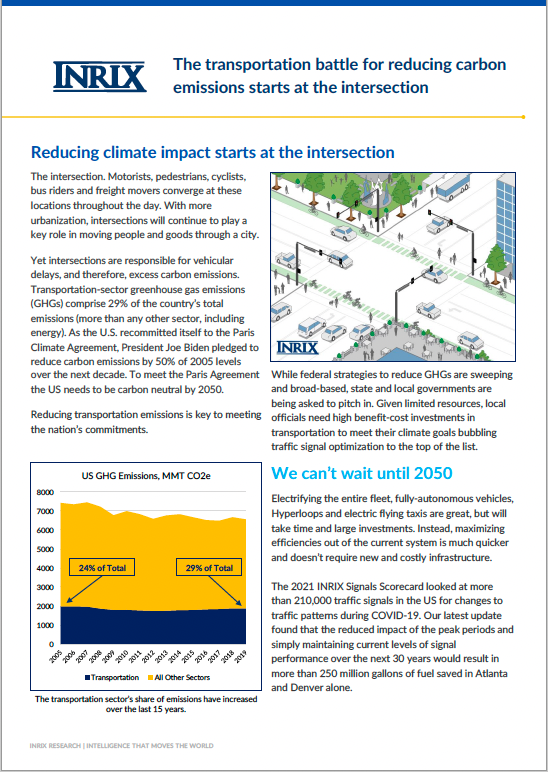The transportation battle for reducing carbon emissions starts at the intersection
While federal strategies to reduce greenhouse gas emissions (GHGs) are sweeping and broad-based, state and local governments are being asked to pitch in.
Given limited resources, local officials need high benefit-cost investments in transportation to meet their climate goals bubbling traffic signal optimization to the top of the list. Maximizing efficiencies out of the current system is much quicker and doesn’t require new and costly infrastructure.
This report examines the correlation between the levels of service within a traffic signal network and the output of greenhouse gas emissions. Using the Green Calculator, our new online tool for measuring the impact of control delay in point of hours lost and GHG emitted, we’ve highlighted the importance of traffic signal optimization and the difference agencies can make with the right tool set.
What You’ll Learn:
-
-
- • Transportation-sector GHGs comprise 29% of the country’s total emissions (more than any other sector, including energy)
-
-
- • Traffic delay at intersections results in up to five times the impact on the environment than previously estimated, making it a priority when it comes to improved health outcomes and quality of life
- • INRIX developed a new online emissions calculator so public agencies can calculate the potential carbon emission savings from signal timing for themselves


